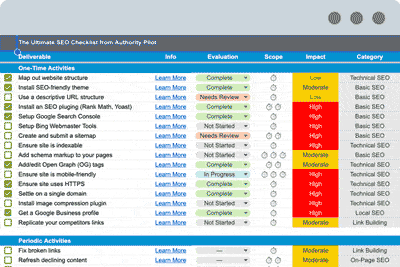
Imagine you’re planning a road trip across the country, but you haven’t decided on a route or destinations yet. You start driving aimlessly, hoping to stumble upon interesting places along the way. Without a plan, you’re likely to waste time, money, and gas on unnecessary detours and dead ends.
The same goes for your website’s SEO. Without paying attention to keyword research strategy, you’re essentially driving blindfolded, hoping to stumble upon high-traffic keywords and attract relevant visitors to your site. Keyword research strategy provides a roadmap for your SEO efforts, guiding you towards the keywords and topics that will drive the most traffic and conversions. By investing time and effort into keyword research, you can save time, increase your visibility, and ultimately, grow your business.
Keyword research strategy is foundational to SEO success. It involves identifying the words and phrases that people use to search for information online. By targeting these keywords in your content, you can improve your search engine rankings, increase organic traffic to your site, and ultimately generate more leads and sales. This post will guide you through the basics of keyword research for SEO, including why it’s important, the elements of keyword research, steps to research keywords for your SEO strategy, and how to find and choose keywords.

Why is Keyword Research Important for SEO?
Keyword research is important for SEO for several reasons:
- It helps you understand your target audience: By researching the keywords that people use to search for information related to your business, you can gain insights into what they are looking for and what language they use.
- It enables you to optimize your content: Once you know the keywords that people are using to search for information, you can optimize your content to include those keywords. This can improve your chances of ranking higher in search engine results pages (SERPs).
- It helps you stay ahead of your competition: By identifying the keywords that your competitors are targeting, you can find opportunities to outrank them and attract more traffic to your site.
Elements of Keyword Research
Before we dive into the steps to research keywords for your SEO strategy, let’s take a look at the key elements of keyword research:
- Search Volume. This refers to the number of times a particular keyword is searched for in a given period. Higher search volume means more people are searching for that keyword, which can lead to more traffic if you can rank for it.
- Keyword Difficulty. This is a measure of how difficult it is to rank for a particular keyword. It takes into account the strength of the competition, the quality of the content on the top-ranking pages, and other factors.
- Relevance. The keywords you choose should be relevant to your business and the content you produce. Targeting irrelevant keywords can lead to low-quality traffic and a high bounce rate.
- Intent. The intent behind the search is important when selecting keywords. Are people looking for information, a specific product or service, or are they ready to make a purchase?
Steps to Research Keywords for Your SEO Strategy
Now that you understand the importance and elements of keyword research, let’s take a look at the steps you can follow to research keywords for your SEO strategy:
Step 1: Brainstorm. Start by brainstorming a list of words and phrases that people might use to search for your business, products, or services. Use your knowledge of your target audience and industry to come up with as many relevant keywords as possible.
Step 2: Use a Keyword Research Tool. Once you have a list of potential keywords, use a keyword research tool to refine your list and find new ideas. Some popular keyword research tools include Google Keyword Planner, Ahrefs, and SEMrush.
Step 3: Analyze Search Volume and Keyword Difficulty. Once you have a list of potential keywords, analyze the search volume and keyword difficulty for each one. Focus on keywords with high search volume and low to medium keyword difficulty.
Step 4: Consider User Intent. When selecting keywords, consider the intent behind the search. Are people looking for information, a specific product or service, or are they ready to make a purchase? Choose keywords that align with the intent of your target audience.
Step 5: Analyze Competitor Keywords. Analyze the keywords that your competitors are targeting to find new opportunities. Look for keywords that they are ranking well for and consider targeting those keywords in your content.
Step 6: Group Your Keywords. Group your keywords into categories based on their relevance and intent.
Step 7: Prioritize Your Keywords. Prioritize your keywords based on their relevance, search volume, and difficulty. Focus on the keywords that are most important for your business and have the best chance of ranking well.
Step 8: Create Content. Use your keyword research to create high-quality content that targets your chosen keywords. Make sure your content is well-written, informative, and engaging for your target audience.
Step 9: Optimize Your Content. Optimize your content by including your target keywords in the title, meta description, headers, and throughout the body of the content. Make sure your content is structured in a way that makes it easy to read and understand.
Step 10: Monitor Your Rankings. Monitor your rankings for your target keywords to see how your content is performing in search engine results pages (SERPs). Make adjustments to your strategy as needed to improve your rankings over time.
How to Find and Choose Keywords
Having covered the steps for research keywords for your SEO strategy, let’s take a closer look at how to find and choose keywords:
- Use Google Search Suggestions: Use Google’s search suggestions to find new keyword ideas. Start typing a keyword related to your business or industry into the Google search bar, and see what other suggestions come up. These can be valuable insights into what people are searching for related to your business.
- Analyze Your Website Analytics: Use your website analytics to see what keywords are driving traffic to your site. Look for opportunities to optimize your content for those keywords or target related keywords.
- Use Competitor Research Tools: Use competitor research tools like Ahrefs or SEMrush to analyze the keywords that your competitors are targeting. Look for keywords with high search volume and low to medium difficulty that you can target in your own content.
- Use Keyword Research Tools: Use keyword research tools like Google Keyword Planner, Ahrefs, or SEMrush to find new keyword ideas and analyze search volume and difficulty.
- Consider Long-Tail Keywords: Long-tail keywords are longer, more specific keyword phrases that are less competitive than shorter, more general keywords. Consider targeting long-tail keywords that align with the intent of your target audience.
Now you’re locked and loaded
Keyword research is an essential part of any successful SEO strategy. By identifying the keywords that people use to search for information related to your business, you can optimize your content to improve your search engine rankings, increase organic traffic to your site, and ultimately generate more leads and sales. Use the steps and tips outlined in this post to conduct effective keyword research and create high-quality content that targets the right keywords for your business.


















